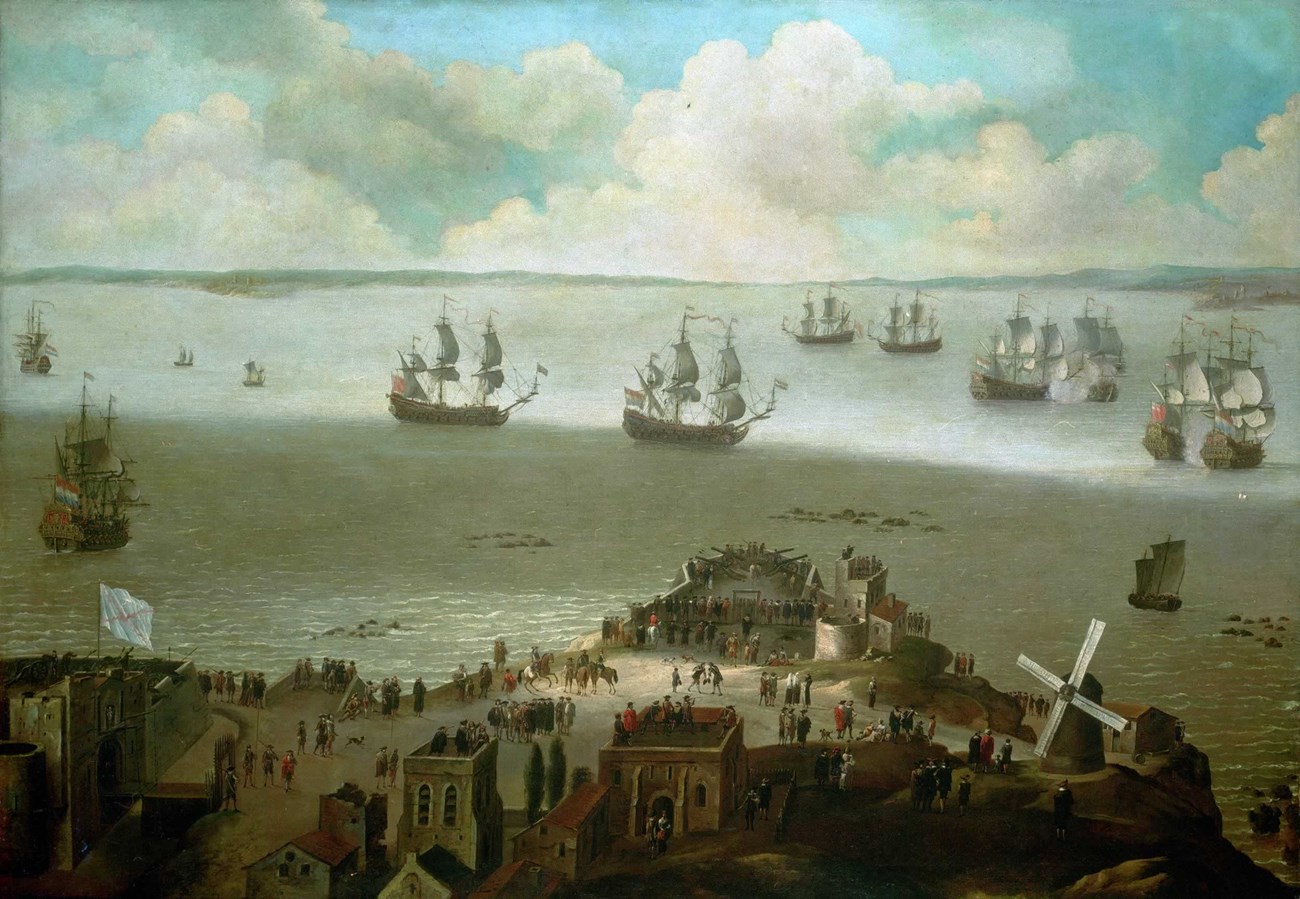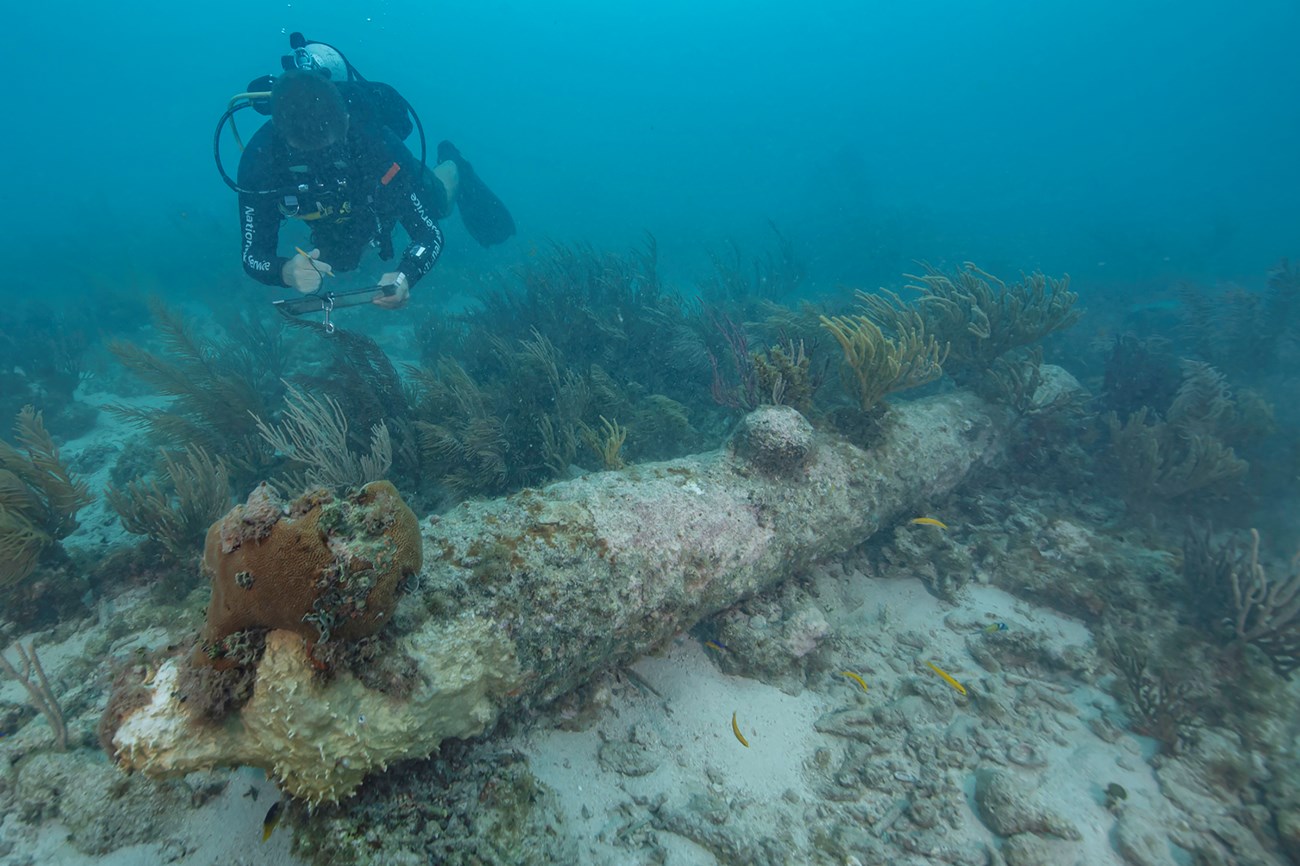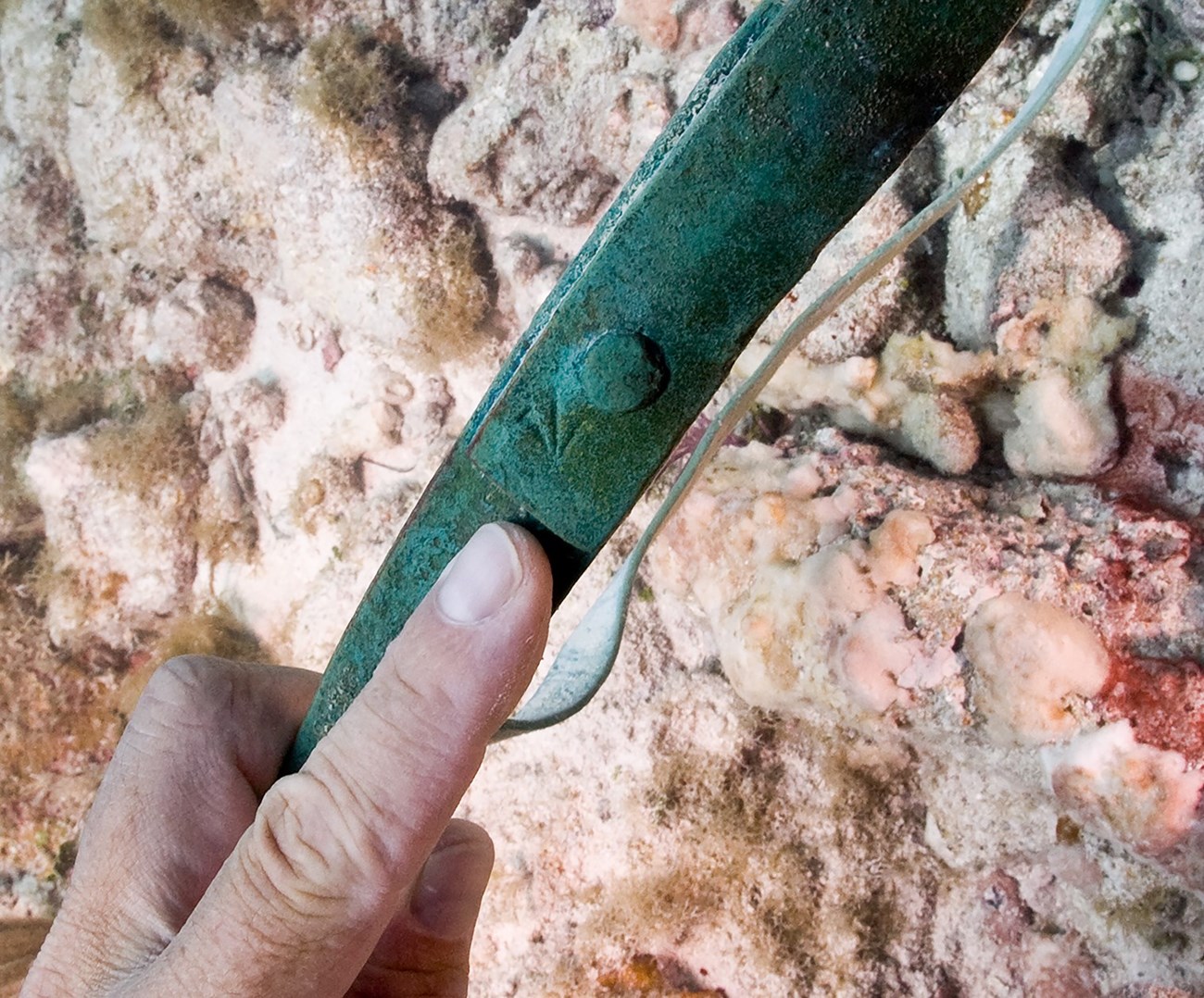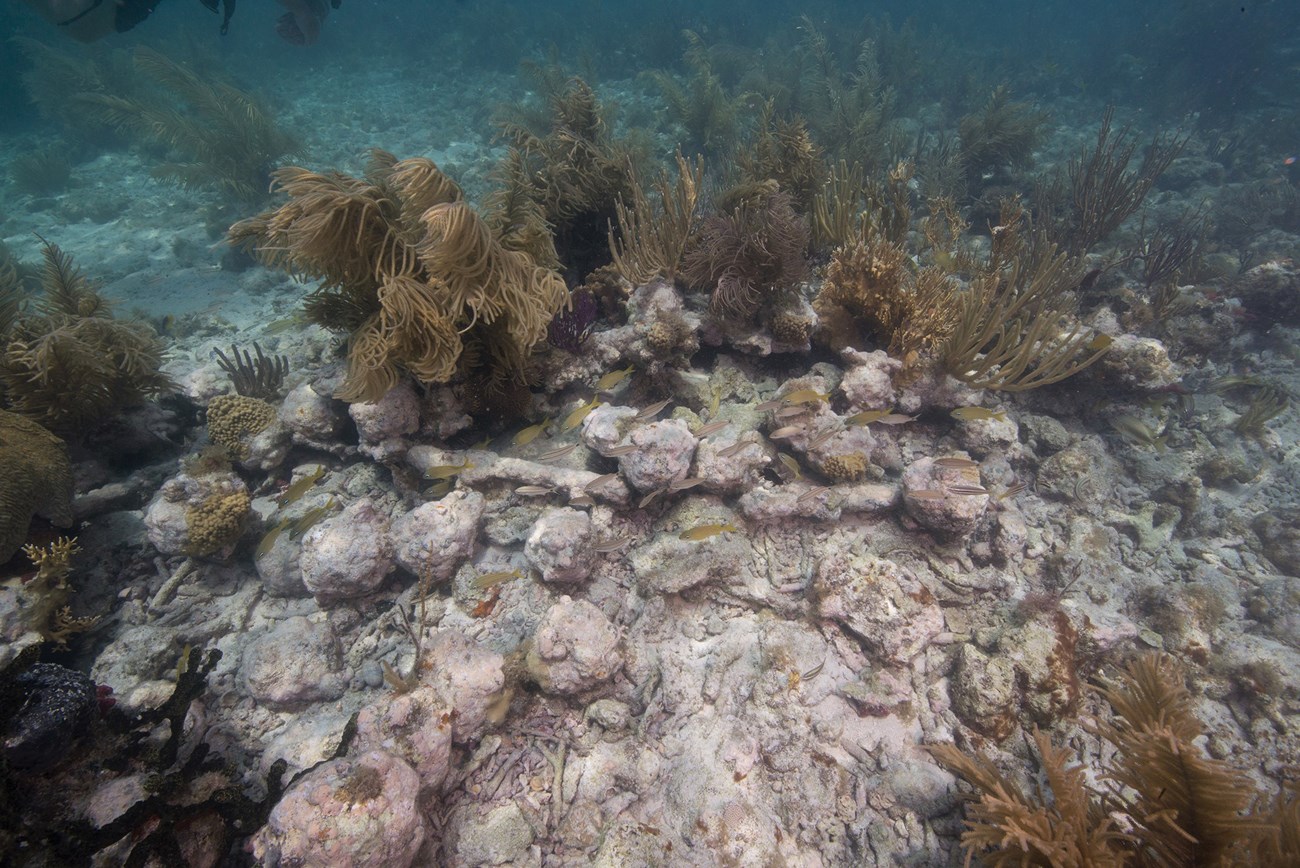Article
Rediscovering HMS Tyger
On January 13, 1742 HMS Tyger ran aground on coral reefs near Garden Key. The crew desperately heaved the heavy cannon and anchors offboard to lighten the load, and tried various means to shift the vessel off its perch. But it was no use. HMS Tyger was stuck – really stuck – and friends were 700 miles away. Hundreds of years later, archeologists identified the shipwreck and have learned much more about the crew’s plight on the isolated island chain.

History of HMS Tyger
British ships arrived in the Florida Keys during the Anglo-Spanish War, also known as the War of Jenkins’ Ear. HMS Tyger was a British warship built in 1647, then reconfigured several times. In 1741, Tyger measured 130 feet long and weighed 704 tons. It carried six 6-pounders on the quarter deck, twenty-two 9-pounders on the upper deck, and twenty-two 18-pounders on the gun deck. Its complement included 281 men, including 5 commissioned officers and 57 marines. The ship and crew sailed in the vicinity of Cuba and Jamaica, intimidating the Spanish as they went, before spotting sails while on patrol between Cape Corrientes and Cape San Antonio. They pursued the Spanish into the Gulf of Mexico, logging but not fully registering the increasingly shallow depths.
And then, on January 13th 1742, Tyger ran aground.
The crew went ashore on Garden Key, where they built shelter and the island’s first fortifications; battled heat, mosquitos, and thirst; cobbled together makeshift vessels from salvaged pieces of Tyger; and plotted escape. Finally, after botching an attack on a Spanish vessel and burning remains the remains of Tyger to prevent it from falling into enemy hands, the surviving crew embarked through enemy waters to seek help at Port Royal Jamaica. The 700-mile (1,125km) trip took over 55 days.
HMS Tyger was the first of three British man-of-war ships to sink off the Florida Keys. Archeologists had identified the locations for the other two (HMS Fowey and HMS Looe), but the Tyger remained lost. Following up on earlier research, archeologists examined the historic ship logbooks more closely. They took the new information to the water, where during archeological survey they located five cannon approximately 500 yards from the main wreck site. The guns were likely British 6- and 9- pound cannon and, given their location, are almost definitely those thrown overboard when HMS Tyger first ran aground. Tyger had been found.

NPS photo by Brett Seymour
Future Stewardship
HMS Tyger crew built the first fortifications on Garden Key more than 100 years before the initial construction of Fort Jefferson, which today dominates the island and is the principal cultural resource within the park. President Franklin D. Roosevelt used his authority under the Antiquities Act to establish Fort Jefferson National Monument in 1935 for the preservation of the Dry Tortugas Islands and Fort Jefferson. The U.S. Congress expanded the monument in 1983 and re-designated it Dry Tortugas National Park in 1992, “In order to preserve and protect for the education, inspiration, and enjoyment of present and future generations nationally significant natural, historic, scenic, marine, and scientific values in South Florida.”
NPS photo by Brett Seymour
Shipwrecks at Dry Tortugas are threatened by both natural and cultural degradation. These threats include major storm events, erosion, illicit excavation, theft, vandalism, and physical damage from surface activities. NPS archeologists continue to research the site, its use, and the potential for additional archeological material. Their research enables the NPS to plan for the site’s future care and stewardship of the site, and in particular monitor any changes caused by either natural or anthropogenic (human) activities. The public plays an important role in helping the National Park Service to preserve and protect HMS Tyger and other submerged archeological resources for this and future generations.

NPS photo by Brett Seymour
For More Information
Van Slyke, Andrew and Joshua Marano. “Hunting HMS Tyger, 1742: Identifying a Ship-of-the-Line in Dry Tortugas National Park.” International Journal of Nautical Archaeology. 2023.For additional details about the HMS Tyger and contact information, view the press release.
